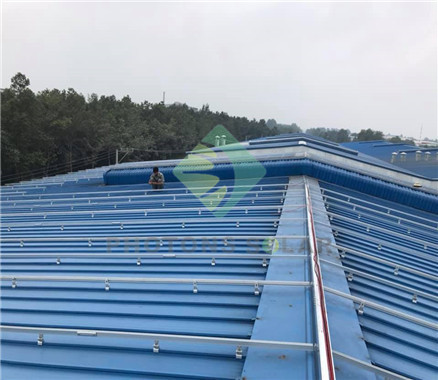Comprehensive Guide to Common Grounding Lug Issues in Solar Systems
Release time:
2025-04-14
Source:
Comprehensive Guide to Common Grounding Lug Issues in Solar Systems
Table of Contents
- Understanding Grounding Lugs in Solar Systems
- The Importance of Grounding in Solar Energy Systems
- Common Grounding Lug Problems
- Symptoms of Faulty Grounding Lugs
- Troubleshooting Grounding Lug Issues
- Best Practices for Grounding Lugs in Solar Installations
- Maintaining Grounding Lugs for Longevity
- Frequently Asked Questions
- Conclusion
Understanding Grounding Lugs in Solar Systems
Grounding lugs play a critical role in solar energy systems, providing a secure connection for grounding wires. They facilitate the safe dissipation of electrical energy into the ground, preventing hazardous situations like electrical fires and equipment damage. Grounding lugs are usually made of durable materials, such as copper or aluminum, ensuring optimal conductivity and corrosion resistance.
In solar panels, grounding lugs connect the photovoltaic modules to the grounding system. A properly installed grounding system safeguards the equipment and enhances the effectiveness of the solar energy system. Understanding the intricacies of grounding lugs is essential for solar installers, technicians, and system owners alike.
The Importance of Grounding in Solar Energy Systems
Grounding is a fundamental safety measure in electrical systems, including solar energy setups. The **importance of grounding in solar energy systems** cannot be overstated for several reasons:
1. **Protection from Electrical Shock:** Grounding ensures that any electrical faults are directed away from people and equipment, reducing the risk of electrical shock.
2. **Equipment Protection:** A well-grounded solar system minimizes damage to sensitive components. By diverting excess electrical surges, grounding helps to prolong the lifespan of inverters, batteries, and other equipment.
3. **Lightning Protection:** Grounding systems act as a lightning rod, redirecting electrical energy safely into the ground, which is crucial for systems placed in high-risk areas.
4. **Regulatory Compliance:** Many local and national electrical codes require proper grounding for solar installations. Complying with these regulations is essential for ensuring safety and avoiding legal issues.
Common Grounding Lug Problems
Despite their critical role, grounding lugs can encounter several issues that may affect the overall performance of a solar system. Some of the most common grounding lug problems include:
1. **Corrosion:** Environmental factors, such as moisture and temperature fluctuations, can lead to corrosion on grounding lugs, affecting conductivity.
2. **Loose Connections:** Over time, grounding lugs may become loose due to vibrations or thermal expansion. Loose connections can result in increased resistance and overheating.
3. **Improper Installation:** Incorrectly installed grounding lugs can lead to poor grounding, resulting in safety hazards and equipment damage.
4. **Incompatibility:** Using incompatible materials for grounding lugs and wiring can lead to galvanic corrosion, compromising the integrity of the connection.
5. **Overloading:** Excessive current can overload grounding lugs, leading to overheating and potential failure.
Symptoms of Faulty Grounding Lugs
Identifying faulty grounding lugs in a solar system is crucial for maintaining safety and performance. Here are some symptoms that may indicate grounding lug issues:
- **Frequent Electrical Faults:** Regular tripping of circuit breakers or fuses can suggest grounding problems.
- **Unusual Heat:** Overheating around the grounding lug area may indicate resistance due to corrosion or loose connections.
- **Discoloration or Damage:** Visual signs of corrosion, rust, or physical damage to grounding lugs are clear indicators of potential issues.
- **Decreased System Performance:** A drop in energy production may signal grounding issues that need to be addressed.
- **Unexpected System Shutdowns:** If the solar system frequently shuts down without explanation, grounding problems may be the culprit.
Troubleshooting Grounding Lug Issues
When problems arise with grounding lugs, timely troubleshooting is essential to prevent further complications. Here are steps to effectively troubleshoot grounding lug issues:
1. **Visual Inspection:** Begin with a thorough visual inspection of all grounding lugs, looking for signs of corrosion, damage, or loose connections.
2. **Check Connections:** Ensure that all grounding lugs are securely fastened. Use a torque wrench to tighten connections to the manufacturer’s specifications.
3. **Test Continuity:** Use a multimeter to test continuity between the grounding lug and the grounding electrode. A reading of zero indicates proper connection, while resistance indicates a potential issue.
4. **Measure Resistance:** Check the resistance of the grounding circuit. A resistance value lower than 25 ohms is generally acceptable for grounding systems.
5. **Replace Damaged Components:** If any grounding lugs show signs of damage or corrosion, replace them immediately to maintain system integrity.
Best Practices for Grounding Lugs in Solar Installations
Implementing best practices in the installation and maintenance of grounding lugs can significantly enhance the safety and reliability of solar systems. Consider the following recommendations:
1. **Use Quality Materials:** Select high-quality, corrosion-resistant materials for grounding lugs to ensure longevity and reliability.
2. **Follow Manufacturer Guidelines:** Always adhere to manufacturer specifications for installation and torque settings to maintain the integrity of the connections.
3. **Regular Inspections:** Conduct routine inspections of grounding lugs as part of preventive maintenance to catch issues early.
4. **Use Proper Tools:** Employ the right tools for installation and tightening, such as torque wrenches, to ensure secure and consistent connections.
5. **Document Grounding Systems:** Maintain detailed records of grounding installations, including materials used, installation dates, and maintenance performed. This documentation aids in future troubleshooting and assessments.
Maintaining Grounding Lugs for Longevity
Proper maintenance of grounding lugs is essential for their long-term performance and reliability. Here are some strategies to ensure the longevity of your grounding system:
1. **Periodic Cleaning:** Regularly clean grounding lugs to remove dirt, debris, and corrosion. Use a wire brush or abrasive cloth to ensure a good connection.
2. **Re-tightening Connections:** Periodically check and re-tighten connections to prevent loosening due to vibration or thermal cycling.
3. **Inspect for Damage:** Regularly inspect grounding lugs for signs of wear, corrosion, or physical damage, replacing components as necessary.
4. **Environmental Considerations:** Consider the environmental conditions where the solar system is installed. Take measures to protect grounding lugs from extreme weather or corrosive environments.
5. **Professional Assessment:** For large or complex installations, enlist the help of professional technicians to conduct thorough assessments of grounding systems.
Frequently Asked Questions
1. What is the purpose of grounding lugs in solar systems?
Grounding lugs provide a secure connection for grounding wires, allowing electrical energy to be safely dissipated into the ground, thereby protecting people and equipment from electrical faults.
2. How can I tell if my grounding lugs are faulty?
Symptoms of faulty grounding lugs include frequent electrical faults, unusual heat, discoloration or damage, decreased system performance, and unexpected system shutdowns.
3. How often should I inspect my grounding lugs?
Routine inspections should be conducted at least once a year, or more frequently for systems in harsh environments, to ensure the integrity and functionality of grounding lugs.
4. Can I use different materials for grounding lugs?
It is essential to use compatible materials for grounding lugs and wiring to prevent galvanic corrosion. Always refer to manufacturer guidelines for material compatibility.
5. What should I do if I find corrosion on my grounding lugs?
If you find corrosion on grounding lugs, clean the affected area, assess the damage, and replace the lugs if necessary to restore proper functionality.
Conclusion
Grounding lugs are essential components of solar energy systems, providing safety and reliability. Understanding the common issues associated with grounding lugs, their importance in solar installations, and best practices for maintenance is crucial for system owners and installers. By staying vigilant and proactive in troubleshooting and maintaining grounding systems, we can ensure the optimal performance and longevity of solar energy solutions. Embracing these practices not only contributes to a safe working environment but also maximizes the efficiency of solar energy systems, allowing us to harness the sun’s power effectively.
Solar panel grounding lug
Related News
2025-04-29 09:40
Understanding the Essential Cables Used for Solar Panels
When it comes to solar panel installations, the type of cable used is a critical component that can significantly impact the system's performance and safety. Solar panels generate electricity, but this power needs to be efficiently transmitted to the inverter and eventually to your home or grid. Therefore, selecting the right cables is essential. One of the most commonly used cables for solar pane
2025-04-26 09:40
The Ultimate Guide to Choosing Metal Roof Clamps for Solar Panels
The Ultimate Guide to Choosing Metal Roof Clamps for Solar Panels Solar panels are increasingly becoming integral to modern energy solutions, providing a sustainable way to harness renewable energy. However, the effectiveness and safety of solar panels depend significantly on the quality of the mounting components, particularly metal roof clamps. This guide offers a detailed exploration of how to







